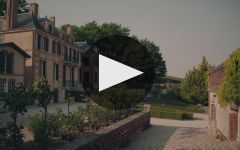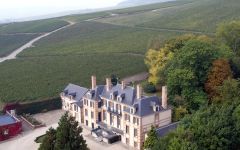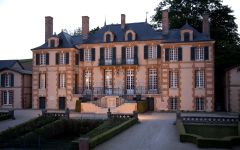Taittinger Brut La Francaise (375ML half-bottle)
-
Tasting
Panel -
James
Suckling -
Robert
Parker



Product Details
Your Rating
Somm Note
Winemaker Notes
Professional Ratings
-
Tasting Panel
Bright and lively, this is one of my favorite non vintage Bruts. Crisp and balanced, with smooth, exuberant, Chardonnay-driven style; racy, elegant, and totally charming; long and memorable.
-
James Suckling
A dry, fresh and delicious Taittinger with aromas and flavors of apples, fresh lemons and minerals. Full-bodied. Precise. White pepper and salt at the end. 40% chardonnay and 35% pinot noir, the rest pinot meunier. Three to four years on the lees. Drink now.
-
Robert Parker's Wine Advocate
The latest release of Taittinger’s NV Brut La Française exhibits aromas of citrus oil, apple, pastry and nuts. Medium to full-bodied with a fleshy fruit core, it’s perfectly balanced with a pinpoint mousse and a refreshing, penetrating finish.








Champagne Taittinger was established in 1931 by Pierre Taittinger on the foundations of Forest-Forneaux, itself established in 1734 and the third-oldest wine producing house of Champagne. Taittinger is today proprietor of approximately 600 acres of vines among which are included parcels in the one hundred - percent rated villages of Cramant and Avize in the Cote des Blancs; and Bouzy, Mailly, Ambonnay and Verzenay in the Montagne de Reims. The Taittinger Estate is one of the three most extensive in the Champagne district, and the firm's major holdings in Chardonnay vineyards are the physical expression of the Taittinger philosophy and style.

A term typically reserved for Champagne and Sparkling Wines, non-vintage or simply “NV” on a label indicates a blend of finished wines from different vintages (years of harvest). To make non-vintage Champagne, typically the current year’s harvest (in other words, the current vintage) forms the base of the blend. Finished wines from previous years, called “vins de reserve” are blended in at approximately 10-50% of the total volume in order to achieve the flavor, complexity, body and acidity for the desired house style. A tiny proportion of Champagnes are made from a single vintage.
There are also some very large production still wines that may not claim one particular vintage. This would be at the discretion of the winemaker’s goals for character of the final wine.

Associated with luxury, celebration, and romance, the region, Champagne, is home to the world’s most prized sparkling wine. In order to bear the label, ‘Champagne’, a sparkling wine must originate from this northeastern region of France—called Champagne—and adhere to strict quality standards. Made up of the three towns Reims, Épernay, and Aÿ, it was here that the traditional method of sparkling wine production was both invented and perfected, birthing a winemaking technique as well as a flavor profile that is now emulated worldwide.
Well-drained, limestone and chalky soil defines much of the region, which lend a mineral component to its wines. Champagne’s cold, continental climate promotes ample acidity in its grapes but weather differences from year to year can create significant variation between vintages. While vintage Champagnes are produced in exceptional years, non-vintage cuvées are produced annually from a blend of several years in order to produce Champagnes that maintain a consistent house style.
With nearly negligible exceptions, . These can be blended together or bottled as individual varietal Champagnes, depending on the final style of wine desired. Chardonnay, the only white variety, contributes freshness, elegance, lively acidity and notes of citrus, orchard fruit and white flowers. Pinot Noir and its relative Pinot Meunier, provide the backbone to many blends, adding structure, body and supple red fruit flavors. Wines with a large proportion of Pinot Meunier will be ready to drink earlier, while Pinot Noir contributes to longevity. Whether it is white or rosé, most Champagne is made from a blend of red and white grapes—and uniquely, rosé is often produce by blending together red and white wine. A Champagne made exclusively from Chardonnay will be labeled as ‘blanc de blancs,’ while ones comprised of only red grapes are called ‘blanc de noirs.’
